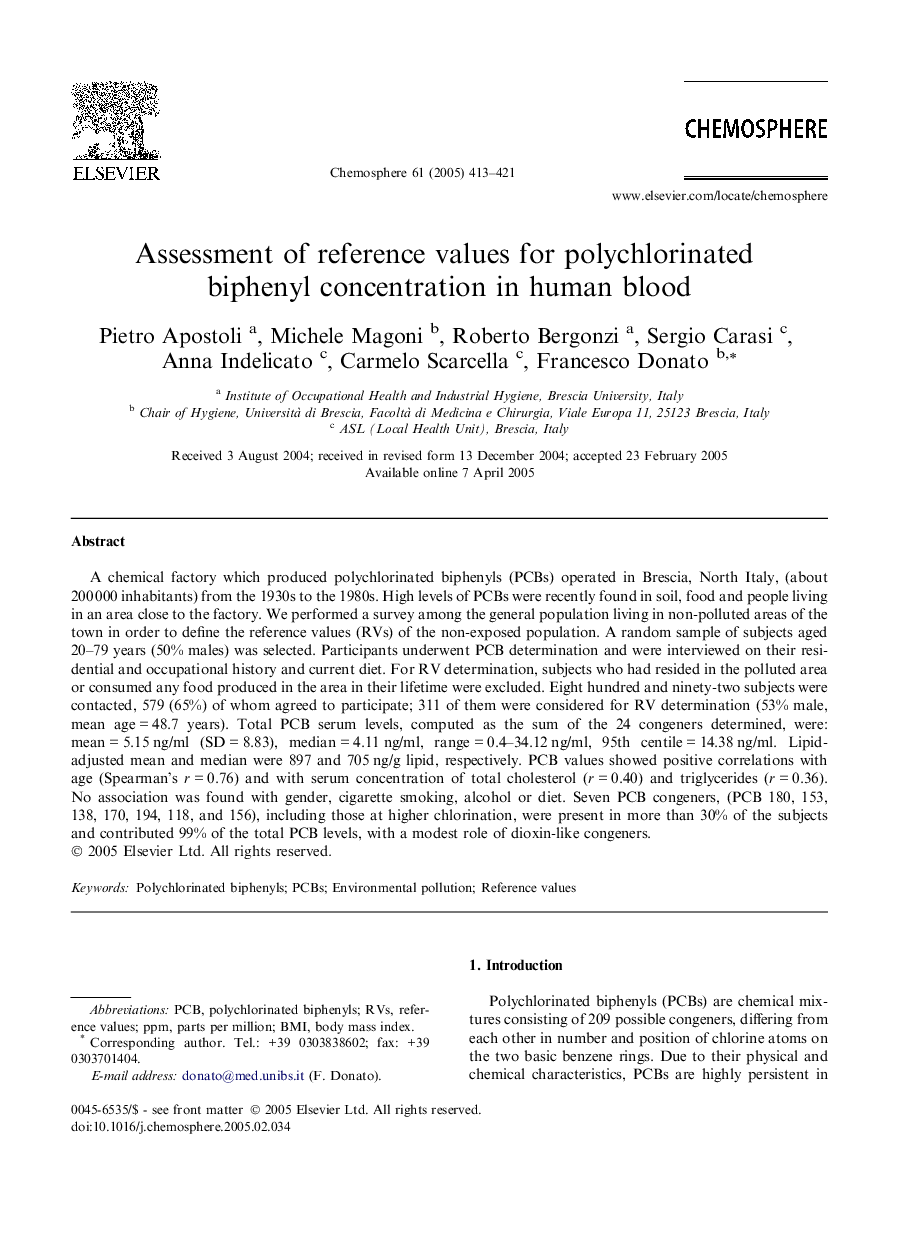| Article ID | Journal | Published Year | Pages | File Type |
|---|---|---|---|---|
| 9451646 | Chemosphere | 2005 | 9 Pages |
Abstract
A chemical factory which produced polychlorinated biphenyls (PCBs) operated in Brescia, North Italy, (about 200 000 inhabitants) from the 1930s to the 1980s. High levels of PCBs were recently found in soil, food and people living in an area close to the factory. We performed a survey among the general population living in non-polluted areas of the town in order to define the reference values (RVs) of the non-exposed population. A random sample of subjects aged 20-79 years (50% males) was selected. Participants underwent PCB determination and were interviewed on their residential and occupational history and current diet. For RV determination, subjects who had resided in the polluted area or consumed any food produced in the area in their lifetime were excluded. Eight hundred and ninety-two subjects were contacted, 579 (65%) of whom agreed to participate; 311 of them were considered for RV determination (53% male, mean age = 48.7 years). Total PCB serum levels, computed as the sum of the 24 congeners determined, were: mean = 5.15 ng/ml (SD = 8.83), median = 4.11 ng/ml, range = 0.4-34.12 ng/ml, 95th centile = 14.38 ng/ml. Lipid-adjusted mean and median were 897 and 705 ng/g lipid, respectively. PCB values showed positive correlations with age (Spearman's r = 0.76) and with serum concentration of total cholesterol (r = 0.40) and triglycerides (r = 0.36). No association was found with gender, cigarette smoking, alcohol or diet. Seven PCB congeners, (PCB 180, 153, 138, 170, 194, 118, and 156), including those at higher chlorination, were present in more than 30% of the subjects and contributed 99% of the total PCB levels, with a modest role of dioxin-like congeners.
Keywords
Related Topics
Life Sciences
Environmental Science
Environmental Chemistry
Authors
Pietro Apostoli, Michele Magoni, Roberto Bergonzi, Sergio Carasi, Anna Indelicato, Carmelo Scarcella, Francesco Donato,
